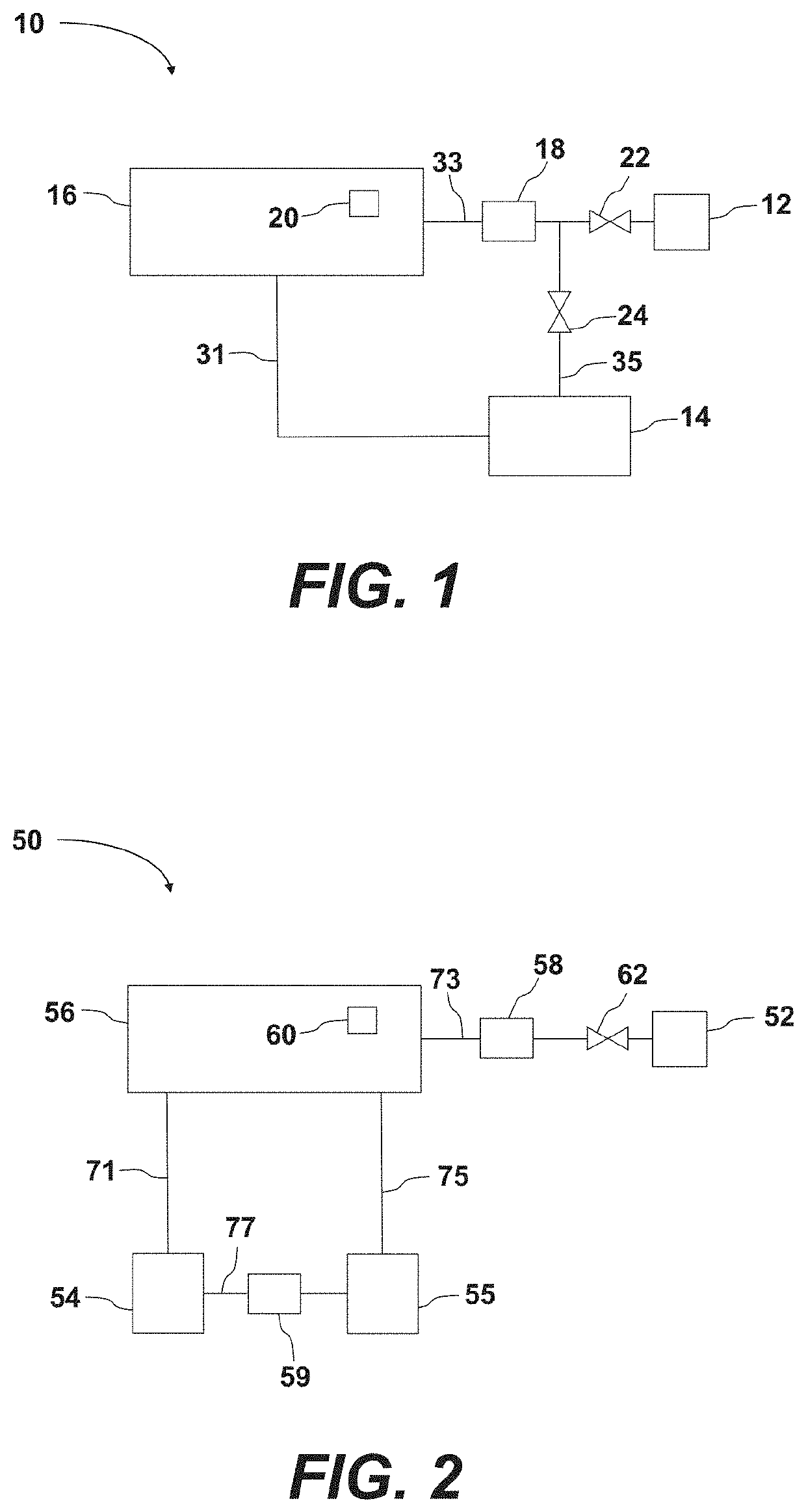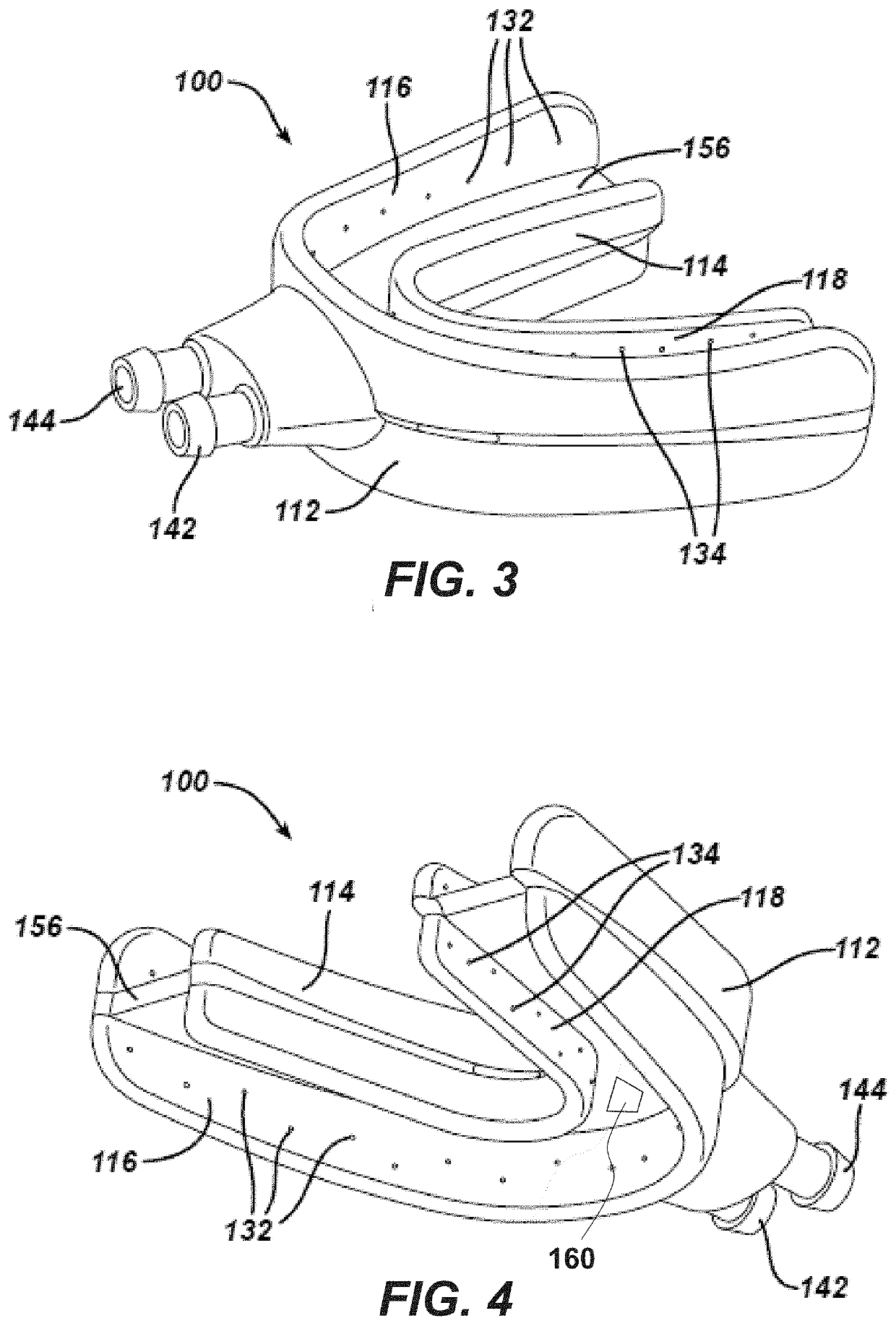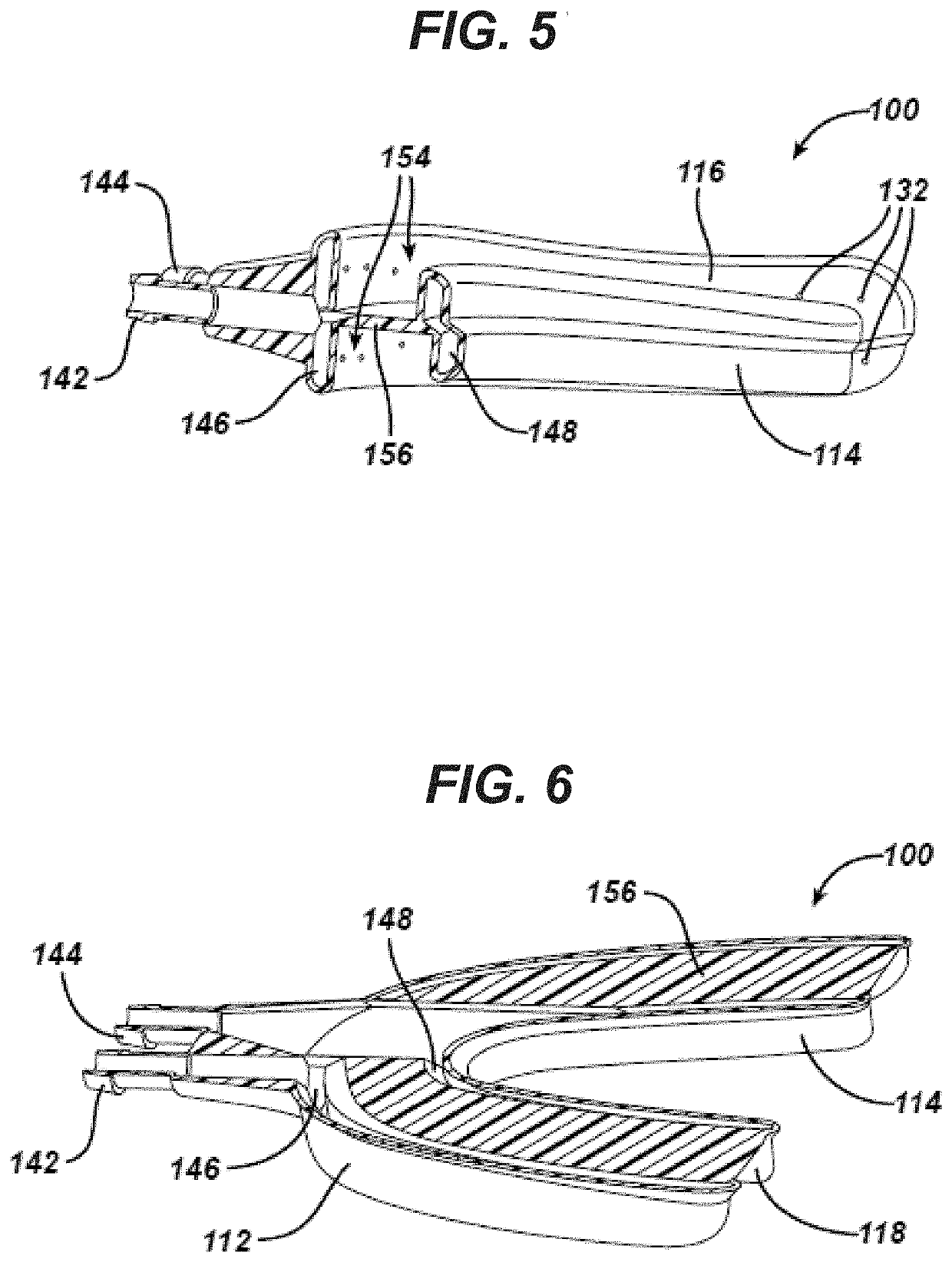Devices and Methods for Collecting Saliva Samples from the Oral Cavity
a saliva sample and oral cavity technology, applied in the field of oral cavity saliva sample collection devices and methods, can solve the problems of increasing the possibility of sample contamination, plaque or biofilm, inability to loosen and remove gingival or sub-gingival areas simultaneously, and the most meticulous individuals dedicated to thorough brushing and flossing practices often fail to reach,
- Summary
- Abstract
- Description
- Claims
- Application Information
AI Technical Summary
Benefits of technology
Problems solved by technology
Method used
Image
Examples
embodiment # 1
Embodiment #1
[0154]The mouthpiece is positioned within the oral cavity and onto the gingival. The seal and position is fixed relative to the teeth and gingival when slight biting pressure is applied against the bite standoffs / locating blocks. The mouthpiece would be made out of a single or combination of materials of different hardness and resilience. In the preferred embodiment, the “H” shaped mouthpiece would have flexible walls (vertical edges of the “H”) which would have a soft, resilient gasket-like material (closed cell silicone, gel filled seal, etc.) at the ends of each of the “H” legs. The horizontal pad of the “H” would include biting blocks / standoffs for positioning the mouthpiece in the X, Y, and / or Z locations, relative to the teeth and gingival. Once the mouthpiece is positioned in the oral cavity, closing of the upper and lower jaw to engage the bite blocks would provide positive and rigid positioning of the mouthpiece relative to the oral cavity, while providing inte...
embodiment # 2
Embodiment #2
[0155]Force applied to the mouthpiece to create inward movement of sidewalls, sealing a soft resilient edge against the gingival tissue. A mouthpiece similar to that described in embodiment #1 would also provide an active locking feature to improve the engagement of the seal. One potential execution of this would require that a hollow section be designed within the horizontal leg and between some or all of the standoffs between the upper and lower sections of the mouthpiece, when the device is not engaged. After the mouthpiece is placed in the oral cavity, the user bites down and compresses the hollow section, which then collapses so that all the bite blocks are in contact. This in turn causes the external walls (the vertical leg portions) to fold inwardly towards the gingival tissue. The resilient gasket attached to these walls engages and compresses against the gingival to create the seal and the cleaning, diagnostic, and / or treatment chamber surrounding the upper and...
embodiment # 3
Embodiment #3
[0156]A pneumatic bladder is inflated or pressurized when the mouthpiece is positioned in the oral cavity to create the seal and cavity with the gingival. A mouthpiece similar to that described in embodiment #1 could also provide an active seal through the inflation of a bladder, or bladders, within the mouthpiece. The air could also subsequently be utilized to clean and or dry the teeth / cavity and / or provide treatment (gas and or entrained particle in gas) for treatment, cleaning and / or diagnostics.
PUM
 Login to View More
Login to View More Abstract
Description
Claims
Application Information
 Login to View More
Login to View More - R&D
- Intellectual Property
- Life Sciences
- Materials
- Tech Scout
- Unparalleled Data Quality
- Higher Quality Content
- 60% Fewer Hallucinations
Browse by: Latest US Patents, China's latest patents, Technical Efficacy Thesaurus, Application Domain, Technology Topic, Popular Technical Reports.
© 2025 PatSnap. All rights reserved.Legal|Privacy policy|Modern Slavery Act Transparency Statement|Sitemap|About US| Contact US: help@patsnap.com



